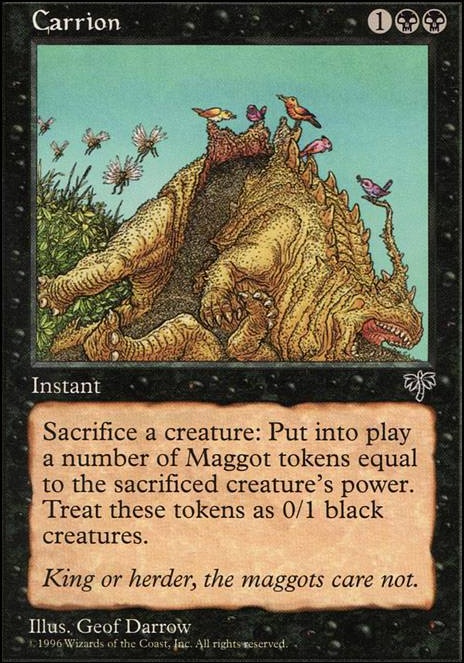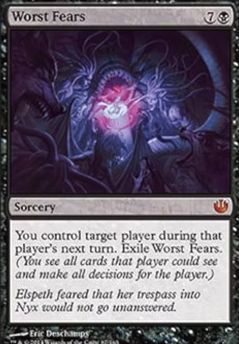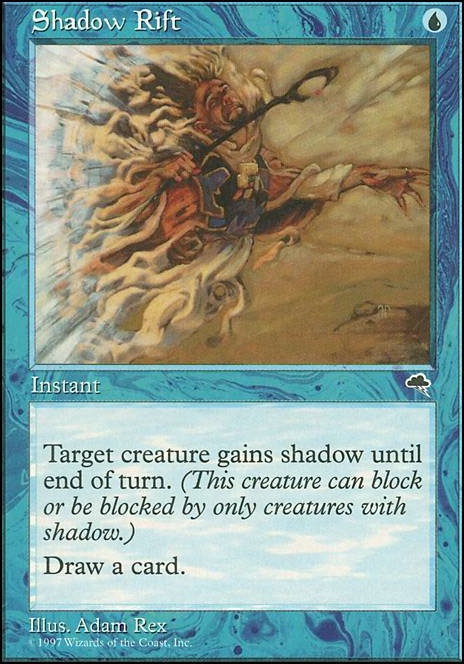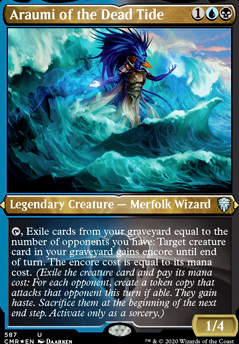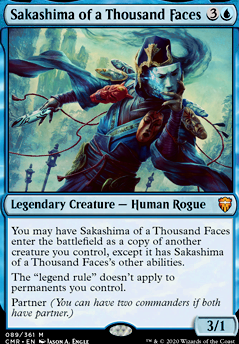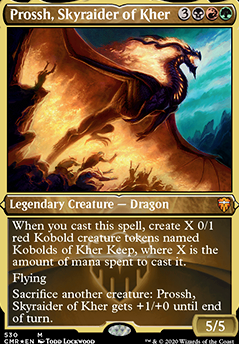Creature (32)
- 1x Acidic Slime
- 1x Anger
- 1x Atarka, World Render
- 1x Avenger of Zendikar
- 1x Blood Artist
- 1x Bloodspore Thrinax
- 1x Brawn
- 1x Butcher of Malakir
- 1x Deathbringer Thoctar
- 1x Dragon Broodmother
- 1x Dragonlair Spider
- 1x Goblin Sharpshooter
- 1x Grand Warlord Radha
- 1x Hissing Iguanar
- 1x Kresh the Bloodbraided
- 1x Mitotic Slime
- 1x Mycoloth
- 1x Ogre Battledriver
- 1x Preyseizer Dragon
- 1x Purphoros, God of the Forge
- 1x Sakura-Tribe Elder
- 1x Sprouting Thrinax
-
1x
Tana, the Bloodsower

- 1x Thromok the Insatiable
- 1x Utvara Hellkite
- 1x Vaevictis Asmadi, the Dire
- 1x Viridian Emissary
- 1x Wasitora, Nekoru Queen
- 1x Wood Elves
- 1x Xenagos, God of Revels
- 1x Yavimaya Elder
- 1x Zulaport Cutthroat
Instant (4)
Land (36)
- 1x Akoum Refuge
- 1x Cinder Glade
- 1x Command Tower
- 1x Dragonskull Summit
- 1x Evolving Wilds
- 1x Exotic Orchard
- 2x Forest
- 1x Forest
- 1x Forest
- 1x Forest
- 1x Forest
- 1x Golgari Rot Farm
- 1x Gruul Turf
- 1x Jungle Hollow
- 1x Kazandu Refuge
-
1x
Kessig Wolf Run

- 2x Mountain
- 3x Mountain
- 1x Mountain
- 1x Mountain
- 1x Rakdos Carnarium
- 1x Rogue's Passage
- 1x Rootbound Crag
- 1x Savage Lands
- 2x Swamp
- 1x Swamp
- 1x Swamp
- 1x Swamp
- 1x Swamp
- 1x Temple of the False God
- 1x Woodland Cemetery
Planeswalker (2)
Commander (1)
Sorcery (9)
- 1x Cultivate
- 1x Explosive Vegetation
- 1x Farseek
- 1x Hull Breach
- 1x Kodama's Reach
- 1x Rampant Growth
- 1x Shamanic Revelation
- 1x Skyshroud Claim
- 1x Tempt with Discovery
Enchantment (9)
- 1x Black Market
- 1x Cindervines
- 1x Doubling Season
- 1x Fecundity
- 1x Goblin Bombardment
- 1x Gruul War Chant
- 1x Impact Tremors
- 1x Parallel Lives
- 1x Vicious Shadows
Artifact (7)
Maybeboard
Creature (20)
- 1x Catacomb Sifter
- 1x Champion of Lambholt
- 1x Craterhoof Behemoth
- 1x Endrek Sahr, Master Breeder
- 1x Ghoulcaller Gisa
- 1x Gleancrawler
- 1x Hanweir Garrison Meld
-
1x
Krenko, Mob Boss

- 1x Living Hive
- 1x Mortician Beetle
- 1x Ob Nixilis, Unshackled
- 1x Ophiomancer
- 1x Orc Sureshot
- 1x Pathbreaker Ibex
- 1x Rampaging Baloths
- 1x Reaper of the Wilds
- 1x Savage Ventmaw
- 1x Spawnwrithe
- 1x Stalking Vengeance
- 1x Ulasht, the Hate Seed
Sorcery (6)
- 1x Army of the Damned
- 1x Blasphemous Act
- 1x Collective Voyage
- 1x Overwhelming Stampede
- 1x Saproling Symbiosis
- 1x Tempt with Vengeance
Land (4)
Enchantment (6)
Planeswalker (2)
Instant (1)
Suggestions
Updates Add
Comments
Attention! Complete Comment Tutorial! This annoying message will go away once you do!
Important! Formatting tips — Comment Tutorial — markdown syntax
Please login to comment
96% Casual
Competitive
| Date added | 9 years |
| Last updated | 5 years |
| Legality | This deck is Commander / EDH legal. |
| Rarity (main - side) | 12 - 0 Mythic Rares 29 - 0 Rares 20 - 0 Uncommons 19 - 0 Commons |
| Cards | 100 |
| Avg. CMC | 3.92 |
| Tokens | 0/1 B Token Creature Insect, Beast 3/3 G, Cat Dragon 3/3 BRG, Dragon 1/1 RG, Dragon 6/6 R, Emblem Arlinn Kord, Insect 1/1 G, Kobolds of Kher Keep 0/1 R, Ooze 1/1 G, Ooze 2/2 G for Mitotic Ooze, Plant 0/1 G, Saproling 1/1 G, Wolf 1/1 B, Wolf 2/2 G |
| Folders | more commander decks, Misc Awesome |
| Votes | |
| Ignored suggestions | |
| Shared with | |
| Views |
